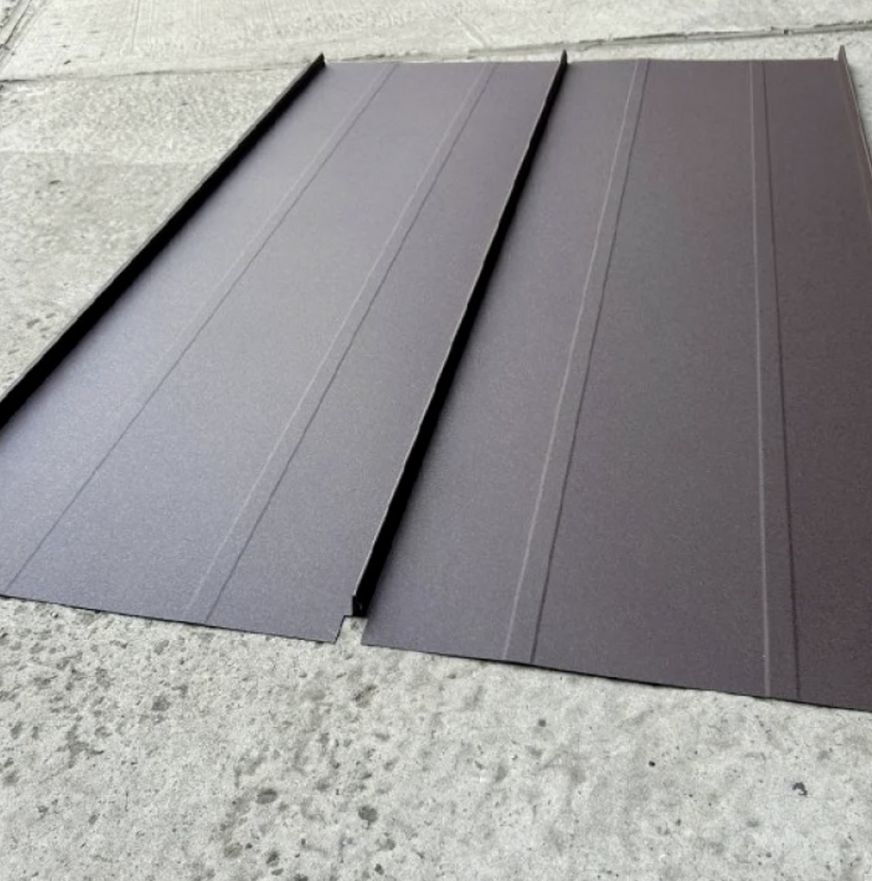Snaplock standing seam roofs are known for their durability, sleek design, and weather resistance. However, regular maintenance is essential to ensure they remain functional and visually appealing over the years. Here’s a guide on how to clean, inspect, and repair Snaplock standing seam panels, along with the tools and best practices for the job.
1. Cleaning Snaplock Standing Seam Roofs
Why Cleaning Matters
Over time, dirt, debris, and moss can accumulate on your roof, potentially leading to corrosion or reduced efficiency in water runoff. Regular cleaning helps maintain the roof's appearance and prevents long-term damage.
Cleaning Steps:
- Gather Tools:
- Soft-bristled broom or brush
- Non-abrasive cleaning cloths
- Mild detergent or roof cleaner
- Garden hose or low-pressure washer
- Process:
- Clear debris (leaves, twigs) using a soft-bristled broom to avoid scratching the surface.
- Mix a mild detergent with water and apply it to the roof using a soft cloth or mop.
- Rinse thoroughly with a garden hose or low-pressure washer to remove residue.
- Allow the roof to air dry naturally.
Best Practices:
- Avoid using abrasive cleaners or steel wool to prevent scratches.
- Perform cleaning during cool, dry weather to prevent streaking.
- Wear soft-soled shoes to avoid damaging the panels.
2. Inspecting Snaplock Standing Seam Roofs
What to Look For:
- Loose Panels or Clips: Check if any standing seam panels or clips are loose or detached.
- Fastener Integrity: Inspect fasteners for corrosion or wear.
- Sealant Condition: Look for cracks, gaps, or deteriorated sealants around seams and edges.
- Surface Damage: Identify dents, scratches, or signs of corrosion.
Inspection Tools:
- Binoculars (for initial inspection from the ground)
- Safety harness and roof ladder (for closer inspection)
- Flashlight (to examine under panels or tight spots)
Best Practices:
- Inspect the roof at least twice a year, preferably in spring and fall.
- Pay extra attention after severe weather events like hailstorms or high winds.
- Address issues immediately to prevent further damage.
3. Repairing Snaplock Standing Seam Roofs
Common Repairs:
- Fixing Loose Panels or Clips:
- Tighten screws or clips using the appropriate screwdriver or wrench.
- Replace missing or damaged clips with manufacturer-approved parts.
- Addressing Scratches and Dents:
- Clean the affected area.
- Use a touch-up paint that matches the roof color to prevent rust.
- Replacing Sealants:
- Remove old, cracked sealant with a putty knife.
- Apply a high-quality roof sealant to ensure a watertight seal.
Repair Tools:
- Screwdrivers or wrenches
- Touch-up paint
- Putty knife and roofing sealant
- Hammer and replacement fasteners
Best Practices:
- Always follow manufacturer guidelines for repairs.
- Use safety equipment like gloves and harnesses during repairs.
- If unsure, consult a roofing professional to avoid further damage.
4. Maintenance Tools and Best Practices
Essential Tools:
- Safety harness and helmet
- Soft-bristled cleaning tools
- Low-pressure washer
- Non-abrasive cloths
- Sealant and touch-up paint
- Ladder stabilizer to protect gutters and panels
Best Practices:
- Establish a maintenance schedule to keep your roof in peak condition.
- Avoid walking on the roof frequently to prevent damage.
- Use manufacturer-recommended products for cleaning and repairs.
- Educate yourself on the specific care requirements of Snaplock standing seam roofs.
5. Benefits of Regular Maintenance
- Longevity: Proper care significantly extends the lifespan of Snaplock roofs.
- Performance: Regular maintenance ensures maximum energy efficiency and water runoff.
- Aesthetics: Clean and well-maintained roofs enhance your home’s curb appeal.
- Cost Savings: Early detection of issues reduces repair costs over time.
By following these tips, you can protect your Snaplock standing seam roof and enjoy its benefits for decades. If you encounter major issues, don’t hesitate to seek professional roofing assistance to ensure safe and effective repairs.




